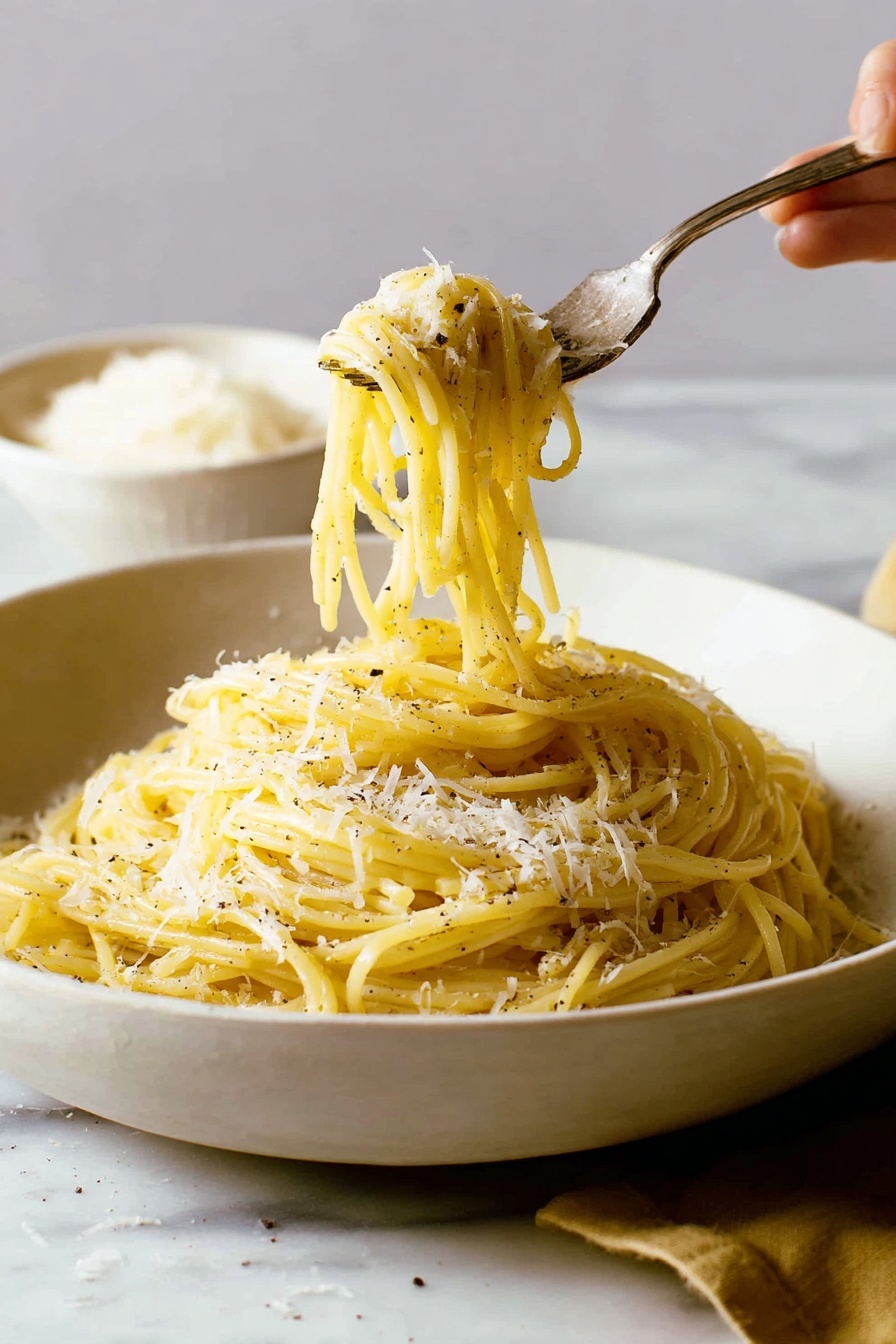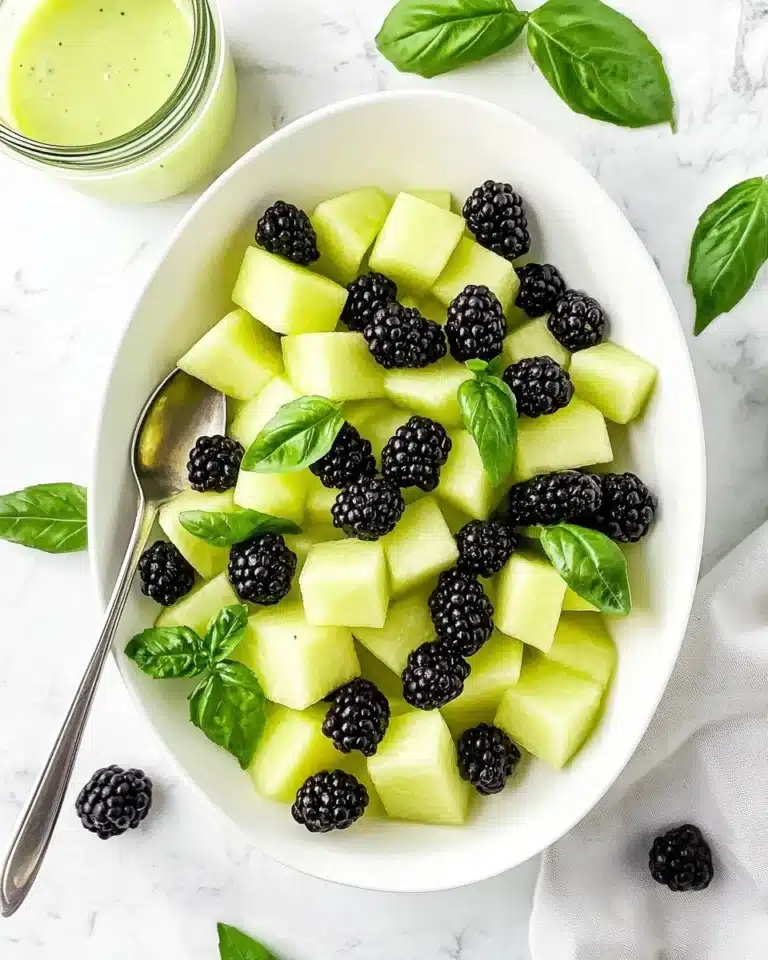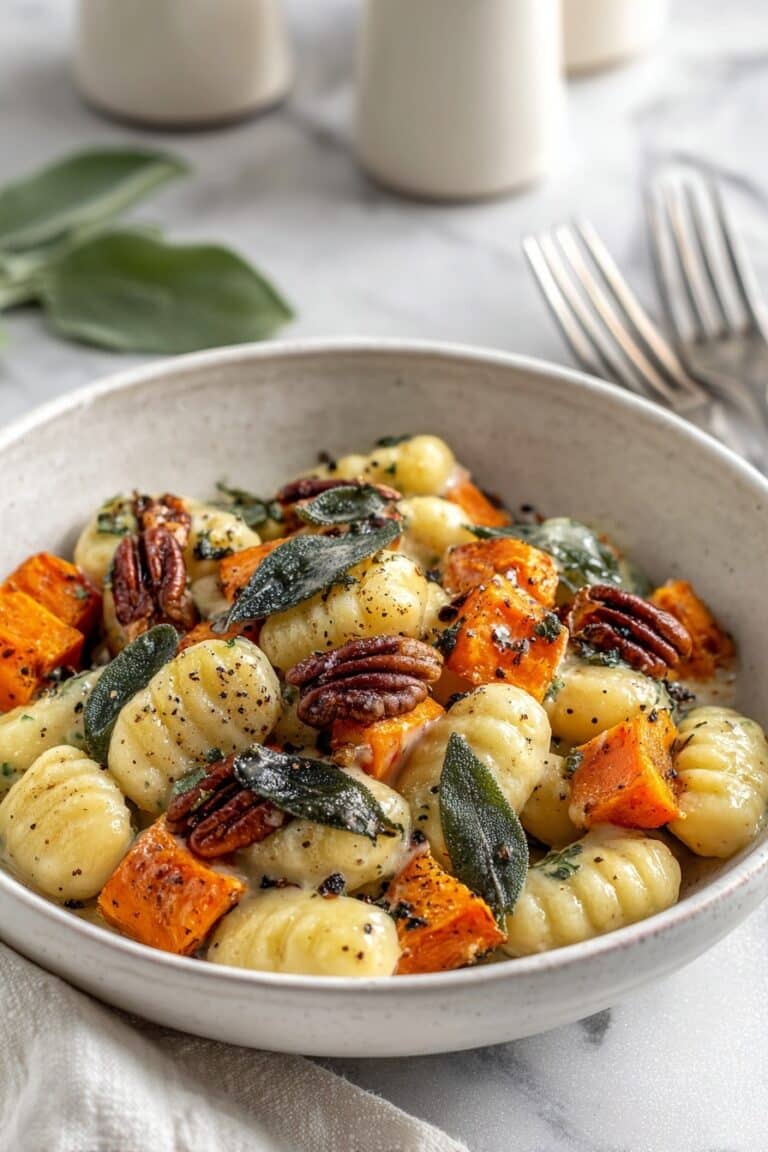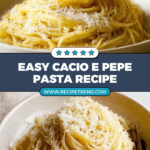If you’ve ever wished for a pasta dish that’s both ridiculously simple and incredibly satisfying, then you’re going to *love* this Cacio e Pepe Pasta Recipe. I absolutely love how this classic Roman recipe turns out every time — creamy, cheesy, and with just the right punch of black pepper. When I first tried making it at home, I was surprised by how just a few humble ingredients can create such a luxurious, restaurant-worthy dinner. Stick with me, and I’ll walk you through every step to make sure your pasta is perfectly silky and full of flavor!
Why You’ll Love This Recipe
- Simplicity at its Best: With just cheese, pepper, pasta, and butter, you get a delicious dinner on the table in under 20 minutes.
- Creamy Without Cream: The magic of starchy pasta water makes this sauce luxuriously creamy without any heavy cream.
- Impresses Every Time: Even guests will think you spent hours cooking — trust me, my family always asks for seconds!
- Great for Beginners: I used to struggle with clumpy cheese until I learned the key trick I’ll share below.
Ingredients You’ll Need
These ingredients are pretty straightforward, but each plays a vital role in making your Cacio e Pepe Pasta Recipe truly shine. Picking quality Pecorino Romano cheese and freshly cracked black pepper will elevate your dish instantly.
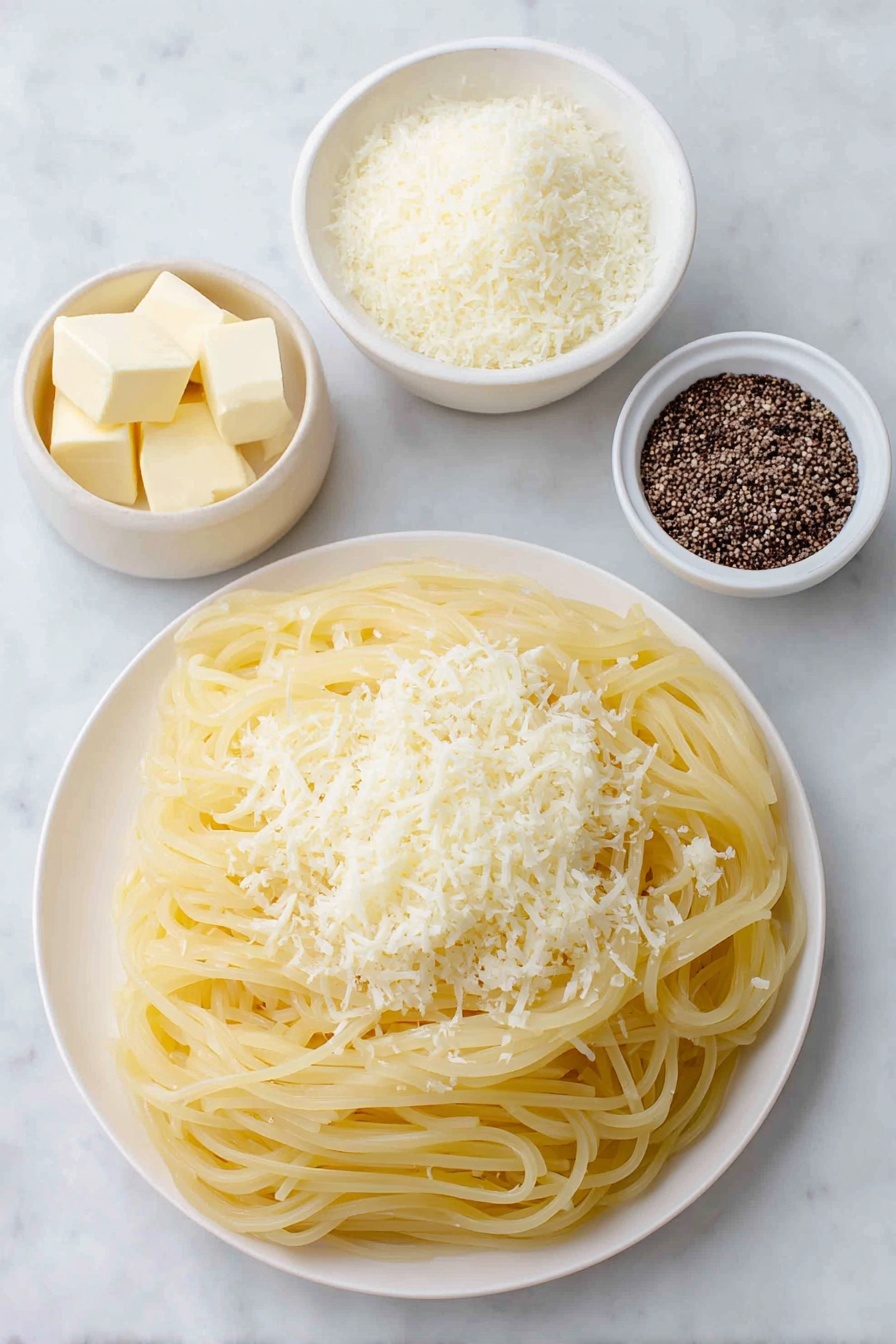
- Bucatini or Spaghetti: I prefer bucatini for its hollow shape that holds sauce beautifully, but spaghetti works just as well.
- Unsalted Butter: Adds richness and silkiness; salted butter can throw off the seasoning balance.
- Freshly Grated Pecorino Romano Cheese: Always freshly grated for the best melt and flavor; pre-grated can be too dry or powdery.
- Cracked Black Pepper: Toasting it lightly brings out deeper flavor—don’t skip this step!
Variations
I love sticking closely to the classic Cacio e Pepe Pasta Recipe, but sometimes I like to mix things up a bit. Feel free to personalize this dish to suit your taste — it’s surprisingly adaptable!
- Add a Protein: I once added some pan-seared shrimp, and it was fantastic for a quick, elevated dinner.
- Swap Cheeses: Mixing Pecorino with Parmesan adds a nuttier flavor I adore on chilly nights.
- Heat it Up: Adding a pinch of red pepper flakes gives the dish a fun, spicy twist without overpowering the classic flavors.
- Vegetarian Boost: Toss in some sautéed mushrooms or roasted asparagus for extra depth and texture.
How to Make Cacio e Pepe Pasta Recipe
Step 1: Get Your Pasta Perfectly Al Dente
Fill up a large pot with water, bring it to a roaring boil, then add a good pinch of salt. This is your chance to season the pasta itself. Drop in your bucatini or spaghetti and cook until just al dente—typically 6 to 8 minutes. Be sure to stir once or twice so the noodles don’t stick together. Test a strand toward the end; it should be tender with a little bite. Don’t overcook, as the pasta will continue to cook slightly in the sauce later!
Step 2: Save That Pasta Water – It’s Gold!
This is the trick that took me from clumpy messes to silky sauce: save about two-thirds of a cup of your starchy pasta water before draining. This water is your secret weapon for emulsifying the cheese and butter into a creamy coating. Trust me, don’t skip this!
Step 3: Melt Butter and Toast Pepper
Return the drained pasta to the pot over low heat, or transfer it to a large skillet. Add unsalted butter and your toasted cracked black pepper. Toss everything together gently until the butter melts and evenly coats the noodles. Toasting the pepper beforehand releases its essential oils and aroma — it’s a game changer.
Step 4: Bring It All Together with Cheese and Water
Gradually add in your grated Pecorino Romano while tossing the pasta vigorously. Add your reserved warm pasta water slowly, just enough to turn the cheese and butter mix into a glossy, creamy sauce that clings beautifully to every strand. If the sauce seems dry or clumpy, more pasta water will smooth it out nicely. This part requires some patience and gentle tossing — it’s worth it!
Step 5: Serve Immediately with Extra Cheese
Before digging in, sprinkle more freshly grated Pecorino over the top for that extra hit of cheesy goodness. Serve right away because Cacio e Pepe is best enjoyed hot and fresh — the sauce tends to thicken if left sitting too long.
Pro Tips for Making Cacio e Pepe Pasta Recipe
- Toast Your Pepper: I discovered that lightly toasting freshly cracked black pepper in a dry skillet before adding it makes the flavor so much brighter and more complex.
- Use Very Hot Pasta Water: Warm water helps melt the cheese evenly — cold water will cause clumping. Always reserve water while pasta is hot.
- Toss, Don’t Stir: Gentle tossing helps create that silky sauce coating, whereas stirring too aggressively can break the sauce.
- Avoid Pre-Grated Cheese: Freshly grating Pecorino Romano is crucial — pre-grated cheese often contains anti-caking agents that prevent proper melting.
How to Serve Cacio e Pepe Pasta Recipe
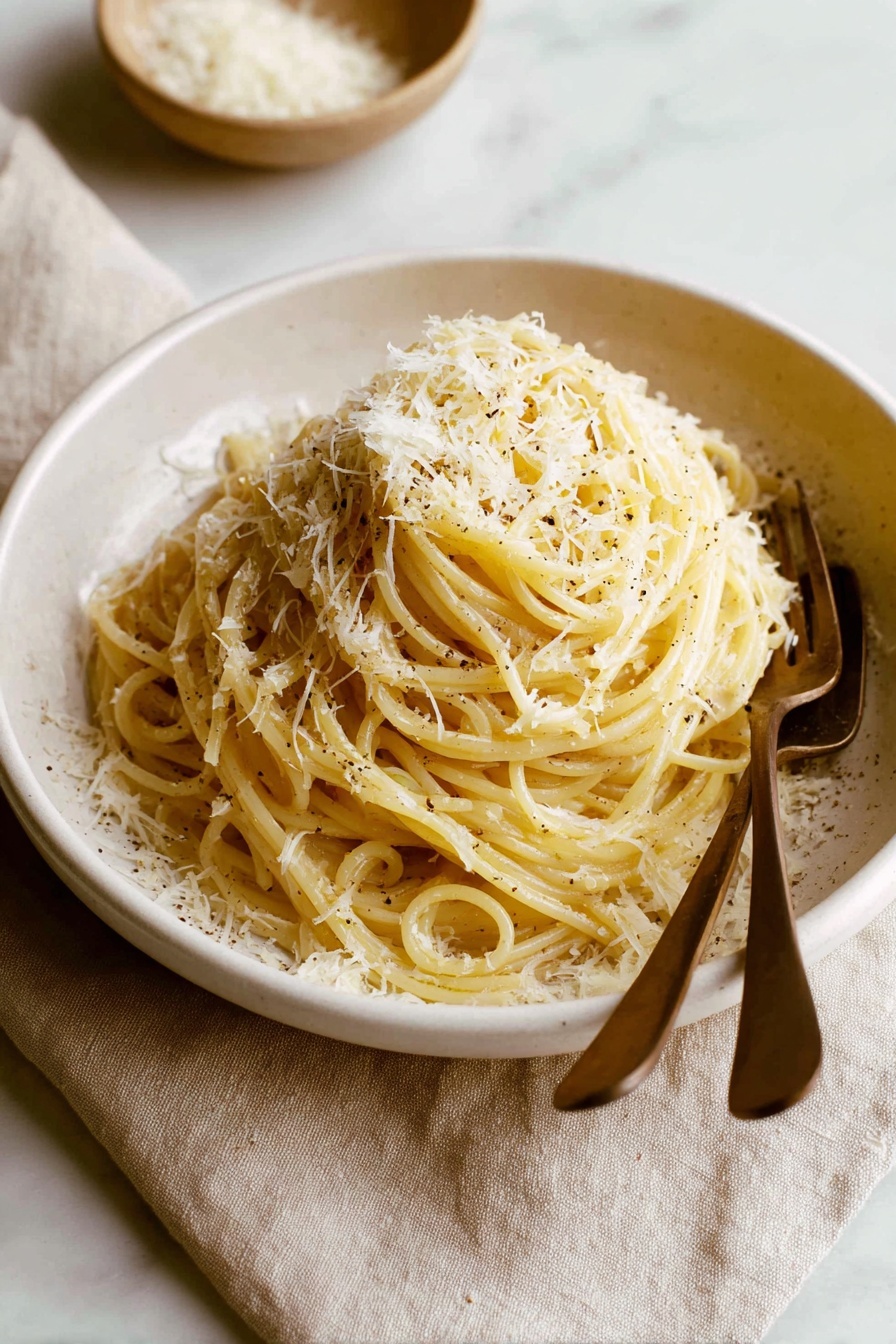
Garnishes
I usually top my Cacio e Pepe with a generous extra sprinkle of Pecorino Romano for that cheesy punch. Sometimes, I add a small drizzle of high-quality extra virgin olive oil or a few fresh basil leaves to brighten it up. A crack of fresh black pepper on top never hurts either!
Side Dishes
For sides, I love pairing this pasta with a simple green salad dressed with lemon vinaigrette or crispy roasted vegetables like asparagus or Brussels sprouts. Garlic bread or a crunchy focaccia never fails to complete the meal beautifully.
Creative Ways to Present
When I want to impress guests, I plate Cacio e Pepe pasta twirled into neat nests on each dish, topped with a fresh grind of black pepper and a Parmesan crisp on the side. It looks fancy but takes almost no extra effort. Great for dinner parties!
Make Ahead and Storage
Storing Leftovers
Leftover Cacio e Pepe can be stored in an airtight container in the fridge for up to 2 days. The sauce tends to stiffen, so before eating, gently reheat with a splash of water or broth to bring back that creamy texture.
Freezing
I don’t usually freeze this pasta because the cheese sauce can separate and become grainy upon thawing. If you must freeze, toss the pasta with a little olive oil first and freeze plain, then add fresh cheese and pepper when reheating.
Reheating
Reheat gently on the stovetop over low heat with a splash of warm water or broth, stirring to loosen up the sauce. The microwave works too, but go low and slow to avoid drying the pasta out.
FAQs
-
Can I use Parmesan instead of Pecorino Romano in this recipe?
Absolutely! Parmesan is milder and nuttier than Pecorino Romano but works wonderfully if you want a subtler flavor. Some people even mix the two for a balanced, rich taste.
-
Why does my cheese clump up instead of melting smoothly?
This usually happens if the cheese is added to the pasta without enough warm pasta water to create an emulsion. Make sure to reserve some starchy pasta water and add it gradually while tossing to form a creamy sauce.
-
Can I make this recipe vegan or dairy-free?
You can swap butter for vegan margarine and use a vegan Parmesan-style cheese alternative. The black pepper and pasta water technique still works great to create a tasty sauce, though the flavor profile will be a different experience.
-
What’s the best pasta shape for Cacio e Pepe?
Bucatini and spaghetti are classic choices because their thin strands catch the creamy sauce beautifully. But feel free to experiment with linguine or even thin fettuccine if that’s what you have on hand.
-
Should I add salt to the sauce?
The Pecorino Romano is naturally salty, so usually you don’t need extra salt in the sauce. Just salt your pasta water well, and your dish should be perfectly seasoned.
Final Thoughts
This Cacio e Pepe Pasta Recipe holds a special place in my heart because it’s proof that simplicity can lead to stunning results. It’s become my go-to comfort food on busy weeknights and a showstopper for last-minute dinner guests. I hope you enjoy making and sharing it just as much as I do — don’t be afraid to experiment with little tweaks that make it yours. Trust me, once you master this, you’ll find yourself reaching for it again and again!
Print
Cacio e Pepe Pasta Recipe
- Prep Time: 5 minutes
- Cook Time: 10 minutes
- Total Time: 15 minutes
- Yield: 2 servings
- Category: Main Course
- Method: Stovetop
- Cuisine: Italian
Description
A classic Italian pasta dish featuring bucatini or spaghetti tossed in a simple yet flavorful sauce made from butter, toasted black pepper, and freshly grated Pecorino Romano cheese. The creamy sauce is achieved by combining reserved starchy pasta water with butter and cheese, creating a rich and comforting meal perfect for a quick dinner.
Ingredients
Pasta
- 8 oz dried bucatini or spaghetti
Sauce
- 2 tbsp unsalted butter
- ½ cup freshly grated Pecorino Romano cheese, plus more for garnish
- ½ tsp cracked black pepper, toasted
Instructions
- Boil Water and Cook Pasta: Fill a large pot with water and bring it to a boil over high heat. Add a small handful of salt to the boiling water, then add the pasta. Cook the pasta, stirring occasionally, until it reaches al dente texture, about 6 to 8 minutes.
- Reserve Pasta Water and Drain: Drain the pasta in a colander, but reserve about 2/3 cup of the starchy pasta cooking water to use in the sauce.
- Combine Pasta and Butter: Return the pasta to the pot or transfer it to a large skillet and place over low heat. Add the reserved pasta water and butter, tossing the pasta together until the butter melts completely and starts to coat the noodles.
- Add Cheese and Black Pepper: Add the freshly grated Pecorino Romano cheese and toasted cracked black pepper to the pasta. Continue tossing vigorously until the cheese melts and combines with the butter and pasta water to form a creamy, smooth sauce that clings to the pasta.
- Serve and Garnish: Plate the pasta and top with extra grated Pecorino Romano cheese as a garnish. Serve immediately while warm for the best flavor and texture.
Notes
- The key to a creamy sauce is to use the reserved warm pasta water, which contains starch that helps the cheese melt smoothly without clumping.
- Toasting the cracked black pepper before adding elevates its flavor and adds a slight smoky aroma to the dish.
- Use high-quality Pecorino Romano cheese freshly grated for the best taste and texture.
- Work quickly when tossing the cheese with the pasta to ensure a smooth sauce before it cools and clumps.
Nutrition
- Serving Size: 1 serving (about 4 oz pasta with sauce)
- Calories: 520
- Sugar: 1 g
- Sodium: 510 mg
- Fat: 20 g
- Saturated Fat: 12 g
- Unsaturated Fat: 7 g
- Trans Fat: 0 g
- Carbohydrates: 63 g
- Fiber: 3 g
- Protein: 18 g
- Cholesterol: 45 mg


